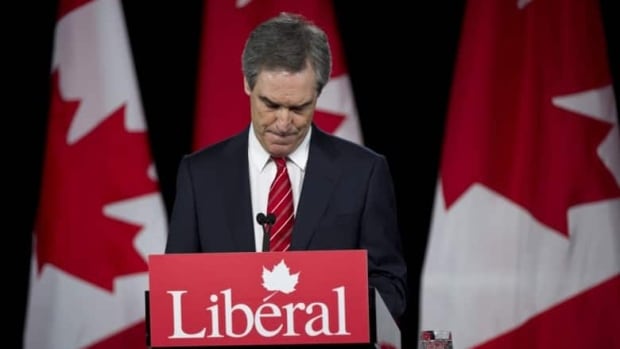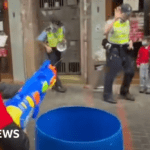Global Courant 2023-04-13 13:11:53
The 2011 federal election seemed to have fundamentally changed Canadian politics. And maybe it did. Just not quite as it had been imagined.
In theory, that vote ushered in a new political era. The day of the Liberal Party was over – the largely centrist institution that dominated Canadian politics in the 20th century was no longer fit for purpose. Canada would finally becoming more like its sister democracies, with a clear battle between a separate party from the political right and a separate party from the left. The future seemed to belong to the Conservatives and the NDP.
Then things changed again, as they are accustomed to do. Chief among those unforeseen developments was the election of Justin Trudeau as Liberal leader, which took place ten years ago this week.
In the short term, Trudeau’s presence alone breathed a little new life into the lungs of a sprawling party. Over time, it also gave the party a new sense of direction. If the worst that could be said about the Liberal Party was that it represented the “mushy middle,” then the best that can be said of Trudeau’s early leadership is that he made the party less mushy.
He announced that he would support the legalization of marijuana. He stated that his party would take a strictly pro-choice stance in favor of abortion rights. He unceremoniously expelled liberal senators from the party’s parliamentary caucus. And then he laid down a party platform that contained no commitment to balancing the federal budget.
Each of these moves – such as Trudeau’s own decision to seek the party leadership – was met with some degree of consternation and skepticism. But four years after the party was given up for dead, the Liberals won 184 seats and Trudeau became prime minister.
What has since taken shape is the most active and activist generation of liberals in power since the Lester B. Pearson administration in the 1960s.
Justin Trudeau arrives on stage in Montreal on October 20, 2015 after the Liberals win the general election. (Nicholas Kamm/AFP/Getty Images)
In 2011, when Michael Ignatieff led the Liberals, the party platform outlined $8.2 billion in new investment spread over two years. In 2015, Trudeau’s platform covered $149.8 billion in four years. The words ‘racism’, ‘gender’ and ‘reconciliation’ do not appear at all on the 2011 platform. Those words appeared 28, 46 and 19 times on the Liberal party’s 2021 platform.
Some of those changes in language and emphasis may simply reflect the changing times (“atonement” hadn’t really entered the popular lexicon when the liberal platform was written in 2011). But they also reflect a leader and a party that has enthusiastically tried to respond to emerging demands and problems.
On his tenth anniversary as leader, Trudeau’s administration may be closer to the end of its tenure than to its beginning. Much of the shine comes from Pierre Trudeau’s famous son. But the Liberals remain competitive in opinion polls and are well ahead of the NDP.
Did the prophecies come true?
One way to read the events of the past 10 years is to conclude that post-2011 realignment theories turned out to be broadly correct – that the party system was indeed polarizing, with the Liberals shifting to become the dominant party of the left. to become.
There could be something going on there, at least in the short term. But it is also possible to overestimate how much the Liberals have moved to the left. The Liberals remain far less inclined than the New Democrats to talk about class or despise the rich and powerful.
Despite major new social investment, the liberals still seem reluctant to create new federally run programs. Dental care only happens because the NDP demanded it, while liberal interest in pharma care has waned.
Liberal leader Justin Trudeau, left, and NDP leader Jagmeet Singh prepare for the start of the Anglophone leadership’s federal election debate in Gatineau, Que., on Thursday, Sept. 9, 2021. (Justin Tang/The Canadian Press)
Even if you look at trends in federal spending, the liberals’ left movement seems more like a push. As a percentage of GDP, federal program spending in 2023-2024 is expected to be only comparable to what it was in the late 1980s, when Brian Mulroney’s Progressive Conservative government was in office.
In electoral terms, it is also possible to conclude that Trudeau’s electoral victories are merely a disguise of what is actually a long-term decline in the position of the Liberal Party.
The ceiling on Liberal support seems to have gradually fallen since Mackenzie King’s Liberals took 51.3 percent of the vote in 1940. Louis St. Laurent came out on top with 49.2 percent, Pierre Trudeau with 45.4 percent, Jean Chretien with 41.2 percent. . While Trudeau won a majority in 2015, the Liberals took just 39.5 percent of the vote.
If the ceiling drops any further, it will be difficult for a future liberal leader to rise.
But the same is broadly true of the Conservative Party – a party that has its own existential challenges. John Diefenbaker’s Progressive Conservatives won 53.6 percent of the vote in 1958 and Mulroney got 50 percent in 1984. Stephen Harper’s Conservatives won no more than 39.6 percent.
In a system that includes both a sustainable NDP and a resilient Bloc Québécois (and a Green Party of sorts), it can simply be very difficult for a party to routinely get much more than 40 percent of the vote.
So the Liberals probably won’t be able to dominate this century as they did the last century (from 1896 to 2006, the Liberals ruled for 80 years). If they do govern, they may have to cooperate more often with other parties (as is the case now).
Not mushy enough?
Ten years after Trudeau became the 13th leader of the Liberal Party of Canada, there is a new complaint – that the party is now not mushy enough.
Political polarization is worth worrying about. Taken to an extreme, it can breed the kind of tribalism that makes a democracy difficult to govern. And it is quite possible that the next Liberal leader will decide that Trudeau has taken the party too far to the left. Economic or political circumstances could force the Liberal Party to change, as it did in the past.
It is also possible that the political center is not or was not quite where it thought it was. And while some experts may favor moderation, other Canadians would reasonably want progress to be made faster than a more centrist approach would allow.
Any Liberal looking to win an election might also note that while the Liberal vote has eroded, the combined Liberal-NDP vote has hovered consistently around 50 percent over the past 40 years — peaking at 59.2 percent in 2015 and only one times below 46 percent. percent (in 2008). And on a topic as central as climate change, so are conservative voters much less enthusiastic about government action.
But the ultimate lesson of the 2011 elections and the past decade is that the future is very difficult to predict – and that political success depends on both luck and adaptability.








